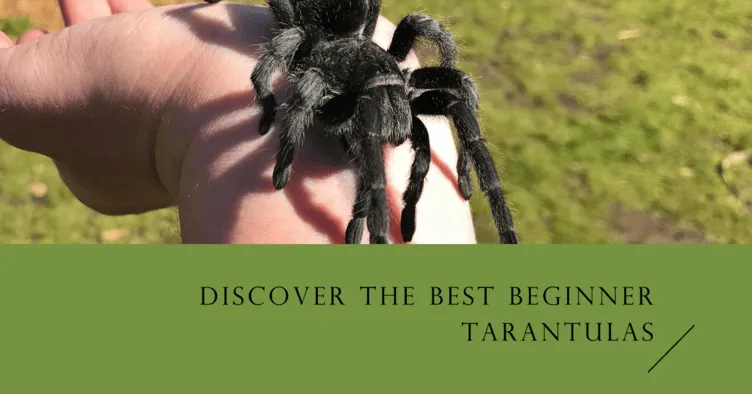Why Choose a Beginner Tarantula Species
Embarking on the journey of tarantula keeping is an exciting endeavor, but it’s essential to start with the right species. Beginner tarantula species are those that are generally more docile, less demanding in terms of care, and more forgiving of occasional mistakes. Choosing a beginner-friendly tarantula significantly increases the chances of a positive experience for both the keeper and the spider. These species provide an excellent introduction to the world of arachnids, allowing you to learn the basics of tarantula care without the added stress of a more challenging species. This initial success can foster a lasting appreciation for these fascinating creatures. Selecting a beginner species allows new keepers to build confidence and develop a solid foundation of knowledge before potentially moving on to more advanced tarantulas. It’s all about starting smart and building a love for these creatures.
Docile Temperament
One of the most critical factors in selecting a beginner tarantula is its temperament. Docile species are less likely to bite or exhibit aggressive behaviors, making them easier to handle and observe. While handling should always be approached with caution, a docile tarantula is less likely to pose a threat. This reduces stress for both the keeper and the spider, and it allows for a more enjoyable interaction. Species known for their calm disposition often include the Chilean Rose Hair and the Mexican Red Knee tarantulas. However, individual tarantulas can vary in personality, so it’s essential to do your research on specific species and, if possible, observe the individual spider before committing to it. A calm tarantula offers a far more rewarding experience for beginners.
Appearance and Colors
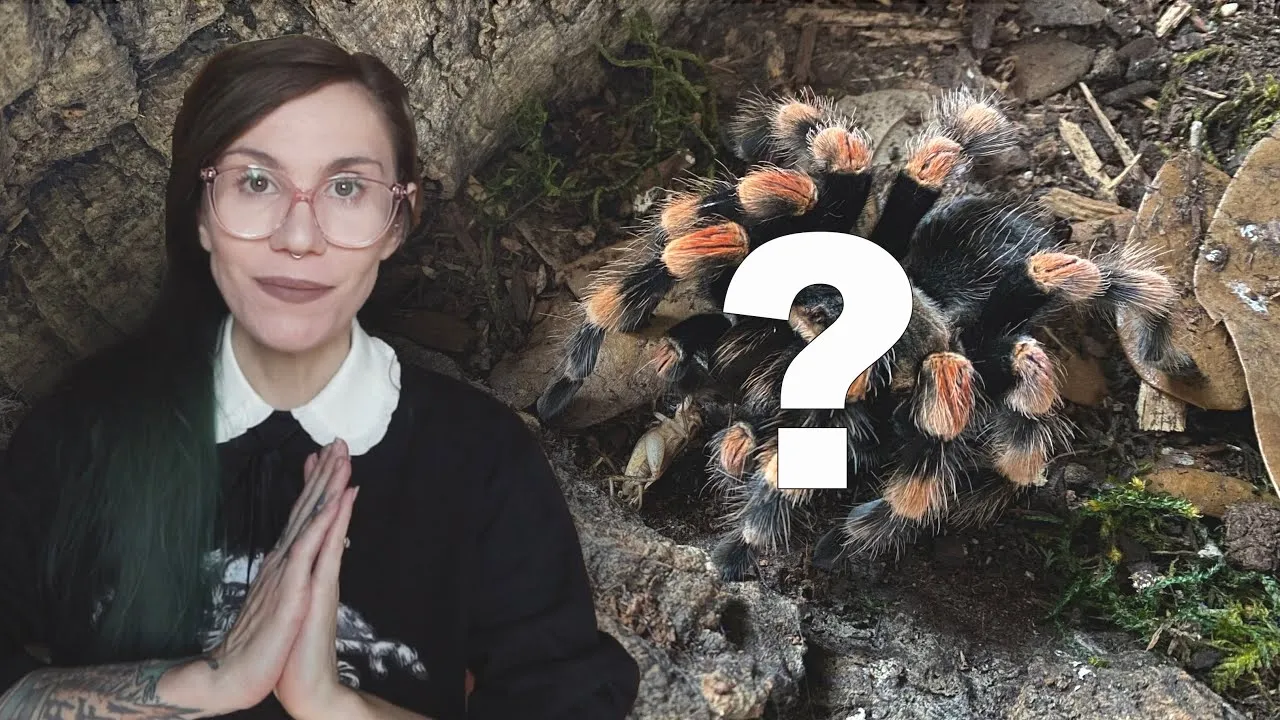
The visual appeal of a tarantula is a significant factor for many keepers. Beginner species often showcase striking colors and patterns, making them captivating to observe. The Chilean Rose Hair, for instance, has a subtle but elegant coloration. The Mexican Red Knee is known for its vibrant red and black markings, which is a favorite among enthusiasts. These species offer a range of aesthetic experiences, adding to the enjoyment of tarantula keeping. The beauty of these spiders is often underestimated, and they offer a unique aesthetic value. The diverse appearances also make them interesting subjects for photography and observation. The beauty of these creatures is a continuous source of fascination.
Size and Growth Rate
Considering the size and growth rate of a tarantula is essential, particularly for beginners. Smaller or slower-growing species are often easier to manage, requiring less space and fewer feedings. Larger tarantulas need significantly larger enclosures, which can be more challenging to set up and maintain. Slower growth rates also give keepers more time to learn and adapt to the needs of their spider. The Chilean Rose Hair and the Mexican Red Knee are known for their moderate sizes and growth rates, making them ideal for beginners. This allows for a less demanding experience. Understanding the size and growth rate helps to plan for the tarantula’s long-term needs, ensuring that it has adequate space and resources throughout its life.
Habitat and Care
The ease of habitat setup and maintenance is a crucial factor in choosing a beginner tarantula species. Species that thrive in a relatively simple setup, with less stringent humidity and temperature requirements, are best suited for beginners. This reduces the risk of creating an unsuitable environment and stressing the spider. Species like the Chilean Rose Hair can tolerate a wider range of conditions, making them more forgiving of minor environmental fluctuations. Careful research on the specific needs of a tarantula is crucial. Correct habitat care minimizes the chance of health problems. Simplified habitat setups allow beginners to focus on learning about the tarantula’s behaviors and care routines. The goal is to provide a comfortable, safe, and sustainable habitat for your spider.
Common Beginner Tarantula Species
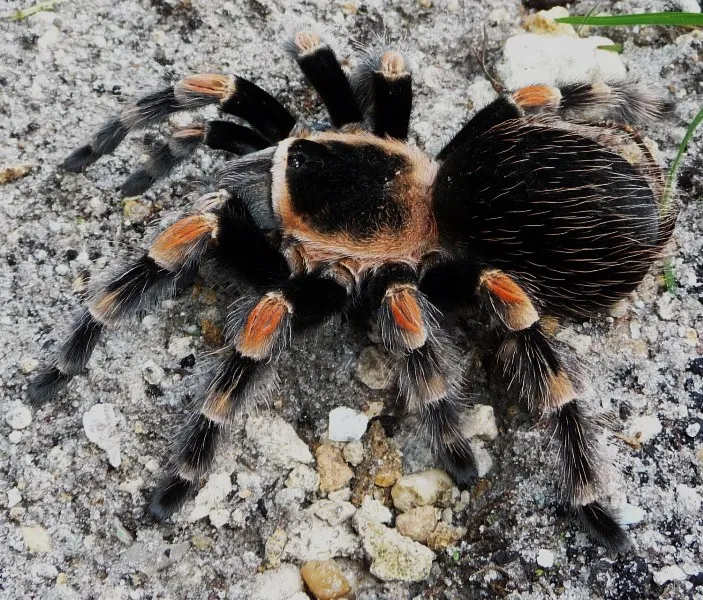
Several tarantula species are widely recommended for beginners. These species are often chosen due to their docile temperaments, moderate care requirements, and readily available information. It is essential to thoroughly research the specific needs of any species you are considering. Learning about the best species available is important. A popular beginner species is a great starting point for those new to tarantula keeping. The following are some of the most frequently recommended beginner species.
Chilean Rose Hair Tarantula
The Chilean Rose Hair (Grammostola rosea) is arguably the quintessential beginner tarantula. Known for its gentle disposition, this species rarely bites and is generally tolerant of handling. Its care is relatively straightforward, thriving in a terrestrial setup with a moderate humidity level. The Chilean Rose Hair is hardy and adaptable, making it a forgiving choice for new keepers. The species is also known for its longevity, with females living for over 20 years, providing a long-term commitment. This long lifespan is an advantage for beginner keepers. This tarantula provides a rewarding and low-stress experience.
Mexican Red Knee Tarantula
The Mexican Red Knee (Brachypelma hamorii) is another excellent choice for beginners, famous for its striking coloration and docile nature. They are typically very calm and are less prone to flicking urticating hairs than some other species. These tarantulas require a terrestrial setup similar to the Chilean Rose Hair, with a focus on good ventilation. The Mexican Red Knee can be a bit more sensitive to humidity changes than the Chilean Rose Hair, requiring careful monitoring, but it is still considered a good beginner species due to its temperament. The beautiful colors and relatively low maintenance make the Mexican Red Knee a popular choice for beginners looking for a visually stunning tarantula.
Pinktoe Tarantula
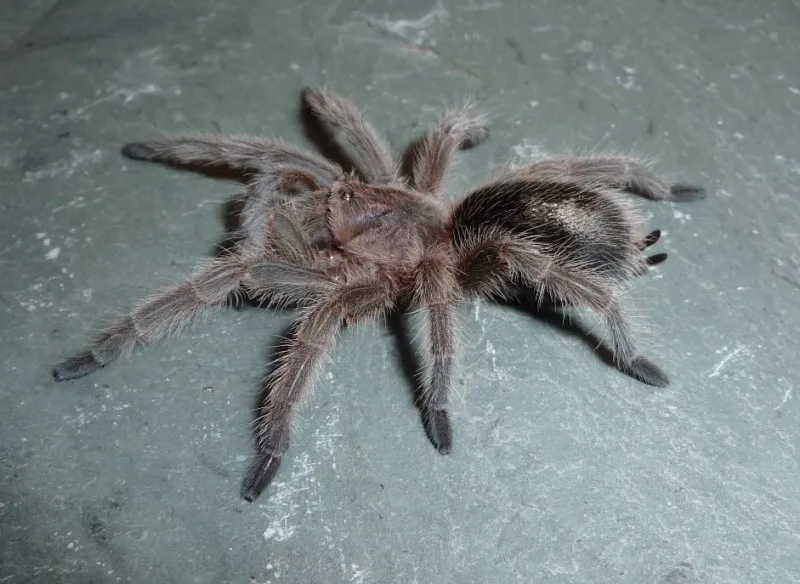
The Pinktoe Tarantula (Avicularia avicularia) is a stunning arboreal species that is often recommended for intermediate beginners. These tarantulas are known for their beautiful pink toe pads and a generally calm temperament. They do require slightly more attention to humidity and ventilation than terrestrial species. These tarantulas are relatively gentle but require a vertical enclosure. The Pinktoe Tarantula is a good next step for those looking to advance their tarantula-keeping skills. Their striking appearance and unique behaviors add to the experience. The arboreal setup differs from the terrestrial ones, expanding the experience for the keeper.
Avicularia Genus Care
Species from the Avicularia genus often require specialized care to mimic their natural arboreal habitat. Unlike terrestrial tarantulas, these species require more humidity and ventilation. Proper ventilation is essential to prevent the build-up of stagnant air and mold growth. A vertical enclosure is necessary, and the substrate should be suitable for retaining moisture. Monitoring and maintaining proper humidity levels is crucial for the health of these tarantulas. Their care differs from more common species. Avicularia species will be a good stepping stone to more advanced tarantula keeping.
Choosing the Right Species for You
Selecting the right beginner tarantula is a personal decision. The best choice depends on your individual preferences, lifestyle, and level of commitment. Consider your available time for maintenance, your comfort level with handling, and your aesthetic preferences. Researching different species allows for informed choices. Proper research can prevent later problems. The following are some crucial considerations when selecting your first tarantula. Thoughtful consideration will ensure a satisfying experience.
Consider Your Experience Level
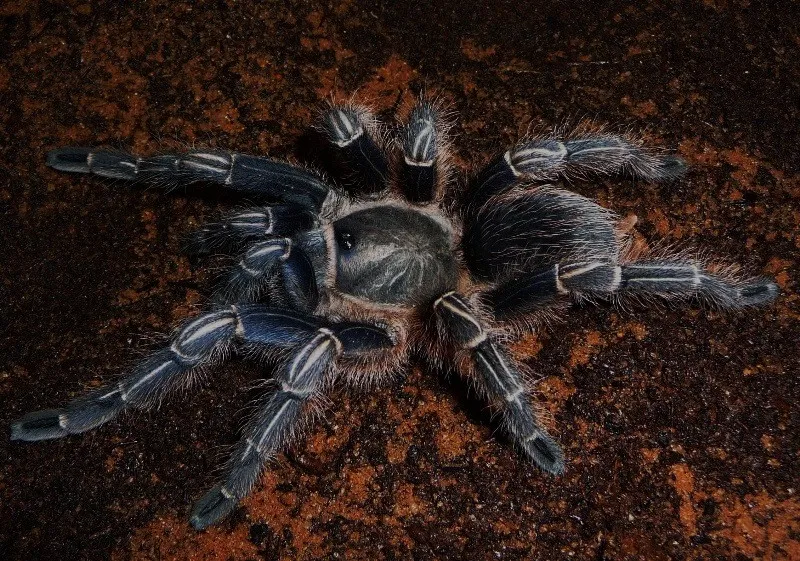
The first thing to do is evaluate your level of experience with exotic pets. Beginners should start with species that are known for being easy to care for and having a docile temperament. More experienced keepers may consider tarantulas with slightly more specific needs. Evaluate where you’re at, and make a good choice based on that. This includes considering your comfort level with handling and the potential for defensive behaviors. An honest self-assessment of your experience is the foundation of success.
Research and Preparation
Thorough research is paramount before acquiring any tarantula. Learn about the species’ specific requirements, including its habitat, feeding habits, and potential health issues. This research should involve gathering information from reputable sources, such as online forums, experienced keepers, and veterinary professionals specializing in exotic animals. Prepare your enclosure and gather all necessary supplies before bringing your tarantula home. Preparation prevents unnecessary stress on the spider and increases the likelihood of success. Having everything ready ensures a smooth transition for your new pet. Proper research is essential.
Acquiring Your Tarantula
When acquiring a tarantula, choose a reputable breeder or seller. This ensures that the tarantula is healthy and properly identified. Observe the tarantula’s behavior and condition before making a purchase. Look for an alert and active spider. Avoid those that appear lethargic, emaciated, or have signs of illness. Consider the tarantula’s age and size, as younger specimens may be more delicate, and larger ones may have more specific needs. Ensure the seller can provide information about the tarantula’s origin and care history. A healthy tarantula is the beginning of a good experience. Make a good choice to start.
Setting Up the Enclosure
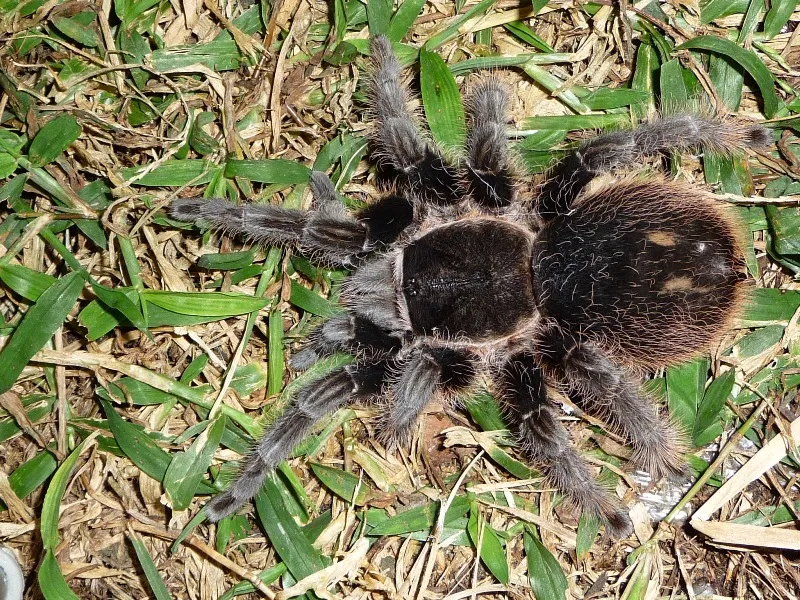
Creating a suitable enclosure is crucial for the well-being of your tarantula. The enclosure should be appropriately sized for the species, with adequate ventilation. A terrestrial species enclosure should be wider than it is tall, while arboreal species require a taller enclosure. The substrate should be appropriate for the species, providing a place for the tarantula to burrow and retain moisture. Include hides, such as cork bark or artificial plants, to give your tarantula a sense of security. Ensure the enclosure is escape-proof and that all openings are secured. A well-designed enclosure minimizes stress and supports the tarantula’s natural behaviors. Create the best home possible for your pet.
Feeding and Watering
Proper feeding and watering are essential aspects of tarantula care. Feed your tarantula live insects, such as crickets or roaches, appropriate for its size. Avoid feeding wild-caught insects, as they may carry parasites or pesticides. Provide a shallow water dish with fresh water at all times. The frequency of feeding depends on the species, age, and growth stage of the tarantula. Overfeeding can lead to health problems. Remove uneaten food within a reasonable timeframe to prevent mold and mite infestations. A consistent feeding schedule helps to keep your tarantula healthy and happy. Proper feeding and watering are vital.
Handling and Safety
Handling tarantulas is not always necessary. If you do handle your tarantula, do so with caution, especially with a beginner species. Always handle the tarantula over a soft surface, such as a bed or carpet, to minimize the risk of injury if it falls. Avoid handling during or shortly after a molt, as the tarantula’s exoskeleton is still soft and vulnerable. Be aware of the tarantula’s defensive behaviors, such as flicking hairs or raising its front legs. If the tarantula shows signs of agitation, gently place it back in its enclosure. Always wash your hands thoroughly after handling. Handling requires a thoughtful approach.
Maintaining Your Tarantula’s Habitat
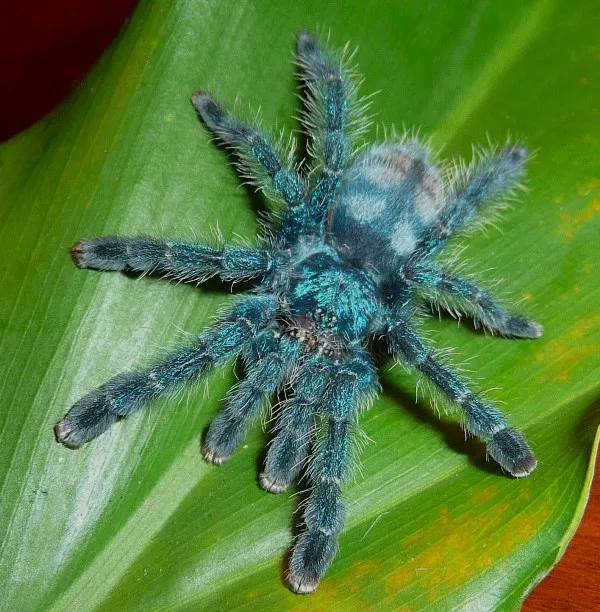
Regular maintenance is essential to maintaining a healthy environment for your tarantula. Regularly clean the enclosure to remove any waste or uneaten food. Maintain the appropriate humidity and temperature levels for the species. Monitor the substrate for mold or other signs of contamination. Replace the substrate as needed, typically every few months or when it becomes soiled. Regularly inspect the enclosure and its contents for any issues, such as pests or infestations. Regular maintenance protects your tarantula from health problems. Consistent maintenance makes the experience better.
Cleaning and Substrate Changes
Regular cleaning is necessary to keep your tarantula’s enclosure healthy. Remove any uneaten food and waste regularly. Spot clean the enclosure as needed. Full substrate changes should be performed every few months, or when the substrate becomes excessively soiled or moldy. Carefully remove the tarantula from the enclosure before cleaning. Dispose of the old substrate properly and sanitize the enclosure before adding fresh substrate. Avoid using harsh chemicals. Thorough cleaning protects the tarantula from harmful bacteria.
Monitoring Humidity and Temperature
Monitoring and maintaining proper humidity and temperature levels are vital for your tarantula’s well-being. Use a hygrometer to monitor humidity levels. Mist the enclosure with water as needed to maintain the appropriate humidity. Use a thermometer to monitor the temperature. Provide a heat source, such as a heat mat, if necessary, but avoid direct contact with the enclosure. The proper temperature depends on the specific species. Fluctuations can impact the tarantula’s health. Proper monitoring keeps the enclosure conditions stable.
Potential Challenges and Solutions
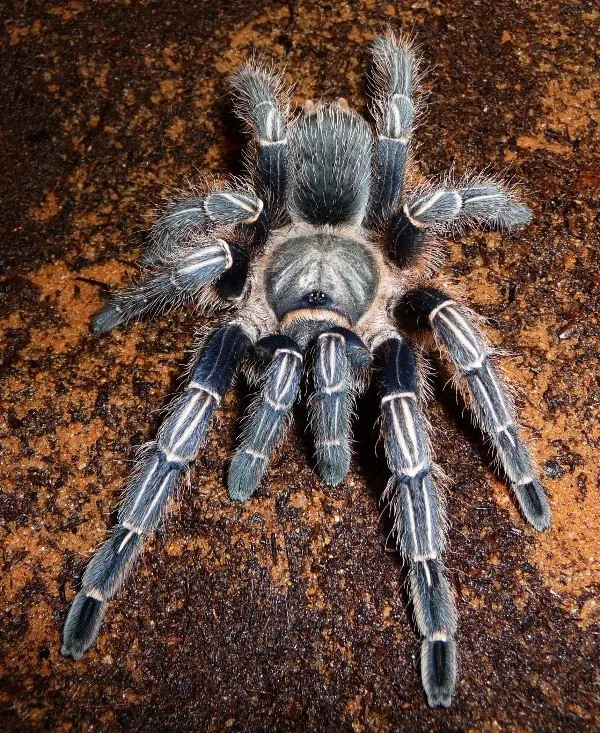
Even with the best care, tarantula keepers may encounter some potential challenges. Common issues include difficulties with molting, loss of appetite, and defensive behaviors. Understanding these potential challenges and knowing how to address them is crucial for successful tarantula keeping. The following sections detail some of the more common issues and how to resolve them. Always be aware and ready to face any issue that may arise.
Moulting
Moulting is a natural process where tarantulas shed their exoskeletons as they grow. Provide a suitable environment for moulting by maintaining proper humidity and temperature. Avoid disturbing the tarantula during this process. Do not feed the tarantula until its fangs have hardened after moulting. The moulting process can take several hours. If the tarantula has difficulty moulting, increase humidity or consult an experienced keeper. Proper care promotes the tarantula’s health.
Loss of Appetite
Loss of appetite can be caused by various factors, including stress, poor environmental conditions, or impending moulting. Monitor the tarantula’s behavior and enclosure conditions. Ensure the environment is correct for the species. Offer food regularly. If the tarantula continues to refuse food, consult an experienced keeper or veterinarian. Loss of appetite is not necessarily a cause for alarm. Proper care will address the problem.
Understanding Defensive Behaviors
Tarantulas may exhibit defensive behaviors, such as flicking urticating hairs or raising their front legs, when they feel threatened. Avoid handling the tarantula if it displays these behaviors. Always respect the tarantula’s space and avoid sudden movements. Learn to recognize the signs of stress. Proper behavior prevents bites. When the tarantula shows signs of stress, avoid the situation to keep yourself and the spider safe.
Benefits of Keeping a Tarantula
Keeping a tarantula offers numerous benefits, including educational opportunities, a unique pet experience, and a relatively low-maintenance lifestyle. These creatures provide a fascinating opportunity to learn about the natural world and the remarkable adaptations of arachnids. Tarantulas are also excellent companions for those seeking a low-maintenance pet. The rewards of tarantula keeping extend beyond just owning a pet. The rewards are the learning experience, the appreciation of nature, and the ease of the pet.
Educational and Fascinating Pets
Tarantulas are fascinating creatures that offer an excellent opportunity for learning about biology and the natural world. Observing their behaviors and care requirements provides a unique educational experience. Learning about their life cycle, feeding habits, and adaptations can be very fulfilling. Tarantulas offer an up-close look at invertebrates. Tarantulas provide an opportunity for learning and personal growth.
Low Maintenance and Quiet Companions
Tarantulas are relatively low-maintenance pets, requiring less attention than many other animals. They don’t need to be walked, played with, or require constant interaction. This makes them ideal for people with busy schedules or those who live in smaller spaces. The care requirements are straightforward, including feeding, watering, and maintaining the enclosure. They are quiet companions. Their independence makes tarantulas a perfect pet for those who enjoy peace and quiet.
Providing a Unique Pet Experience
Keeping a tarantula provides a unique and rewarding pet ownership experience. They are unlike the typical pets. Their exotic nature adds an element of intrigue and fascination to the experience. Their beauty and unique behaviors make them enjoyable pets. Tarantulas are fascinating pets that provide a special experience. Owning a tarantula is a special experience.
